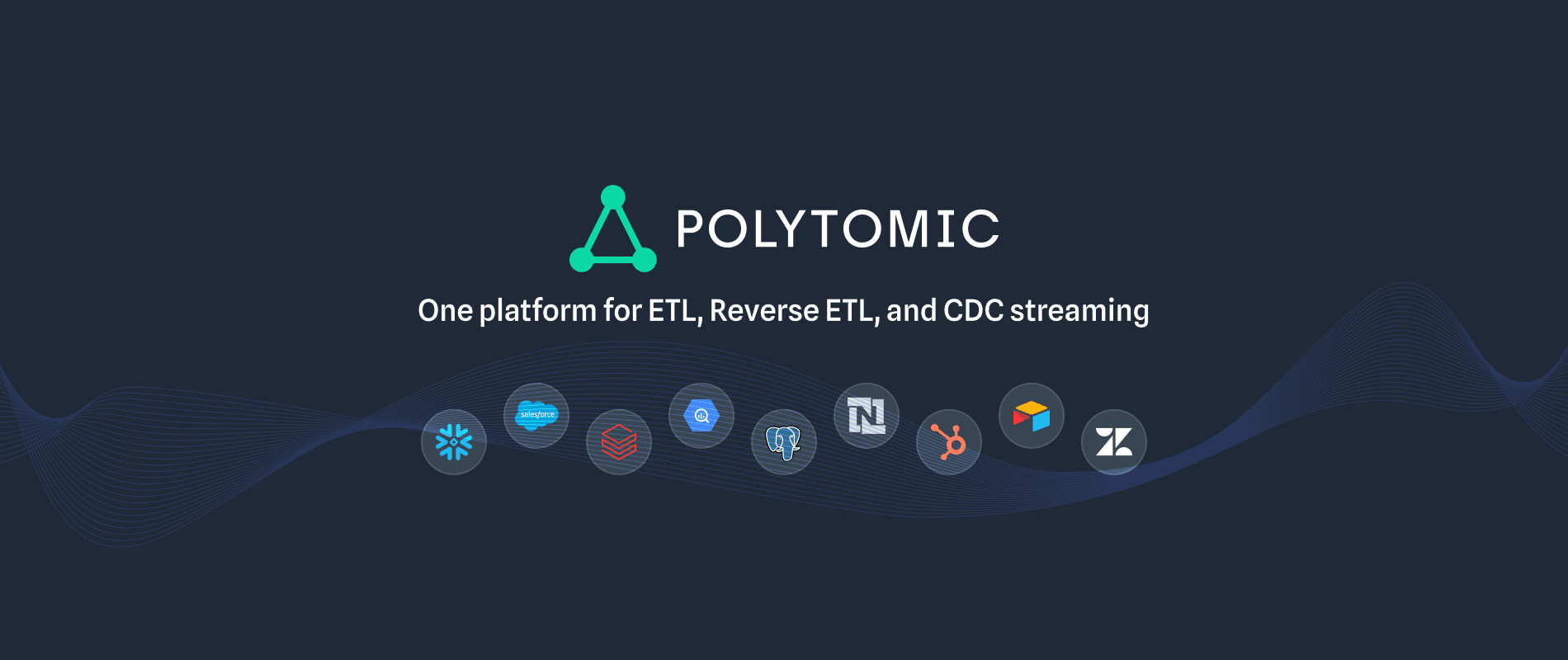
Census vs Hightouch For ETL/ELT in 2025
Census syncs data from your data warehouse to SaaS apps like Salesforce and Hubspot, while Hightouch offers a platform for marketing and personalization, enabling companies to run campaigns and build AI agents. In this article, we'll compare Census and Hightouch to see which one is the best ETL solution for your stack.
What are Census and Hightouch?

Census
Census is a Reverse ETL platform that syncs data from your data warehouse to SaaS apps like Salesforce, Hubspot, and ad platforms.
It ensures that your business tools are always up-to-date with the latest information from your data warehouse.

Hightouch
Hightouch is a reverse ETL and AI platform crafted for marketing and personalization, allowing companies to uncover insights, execute campaigns, and develop AI agents using their data.
It features an AI Decisioning Platform for lifecycle marketing and a Composable Customer Data Platform (CDP) that is adaptable, secure, and quick to deploy, built on top of a data warehouse.
Compare Census and Hightouch

Census

Hightouch
Key Features
- Sync data from your warehouse to various tools (Reverse ETL)
- Utilize workspaces for better organization
- Leverage a white-label API for seamless integration
Key Features
- Sync your data using Reverse ETL
- Focus on AI capabilities and personalized marketing
- Start with a free tier
Limitations
- Limit on the number of synced fields for the Professional plan
- Pricing model not based on scale (per field pricing)
- Enterprise plan needed for syncs more frequent than every 15 minutes
- Unable to sync to data warehouses
Limitations
- Does not support syncing to data warehouses (No ETL)
- Excess features and pricing for just Reverse ETL
- Lack of unlimited workspaces
Pricing
Census provides three primary pricing options: a limited free plan, a Professional plan beginning at $350 per month, and customizable Enterprise plans. For real-time sync capabilities and access to their "Audience Hub" features, the Enterprise plan is necessary.
Pricing
Hightouch's Starter Plan includes a free tier at $0 and a paid tier at $350 per month, billed annually with a 20% discount.
For larger teams, the Business Plan offers custom pricing tailored to specific needs, featuring unlimited user seats and advanced personalization features.
Reviews
Census has an overall rating of 4.5 out of 5 stars. Some users find Census to be expensive, especially for scaling companies.
There are mentions of feature limitations and missing features. A few users noted that some functionalities, like on-the-fly transformations, are lacking in certain pricing tiers. One review mentioned that the tool is still young and has limited connections to SaaS tools. Check out more of their reviews here.
Reviews
Hightouch has an overall rating of 4.6 out of 5 stars. Some users have mentioned that the pricing model can be expensive, especially for startups or when the paid solution is used extensively.
There are comments about the learning curve and the need for better error handling and debugging processes. The UI is sometimes described as confusing and not very intuitive. Error reporting, especially for large batches, needs improvement. Check out more of their reviews here.
Why customers are switching to Polytomic
Polytomic unifies ETL/ELT, Reverse ETL, and database CDC into a single platform—so your data moves in and out of the data warehouse without relying on multiple vendors.
- Built for Data Teams: Consolidate your ETL and Reverse ETL needs with one solution. Polytomic handles high-throughput CDC streaming, full SQL transformations, and support for infrastructure-as-code.
- RevOps and Marketing-Friendly: Launch data pipelines to your CRM and ad platforms in minutes with an intuitive UI, plus advanced tools like live SOQL transformations on Salesforce data.
- API for AI & Product Teams: Deliver embedded customer integrations via our white-labeled native API. Polytomic supports seamless syncing into customer CRMs and data warehouses with built-in auth and integrations with the whole GTM stack.
- Enterprise-Grade: Deploy on-prem or in the cloud, manage complex orgs with multi-tenant workspaces and fine-grained RBAC permissions, and cut costs by 30–50% through platform consolidation. Backed by fast, responsive support from real data engineers.
What is Polytomic?
Polytomic
Data teams appreciate our single ETL platform with unified monitoring to centralize all data movement. We have full SQL support and first-class support for infrastructure-as-code.
RevOps and marketing teams use our no-code UI to quickly and independently set up syncs for product data to their CRM and ad platforms.
Built for enterprise scale, Polytomic can be self-hosted, handles billions of rows reliably, and has multi-tenant workspaces with fine-grained access controls.
















All the features you need, on the platform that does it all
Replace multiple vendors
Reduce costs and simplify workflows
One platform for all syncs
ETL, Reverse ETL, CDC, iPaaS, APIs, and spreadsheets
Sync only what's changed
Save on API limits and compute costs
Point and click
Select and filter your data without writing code
SQL query support
Powerful transformations when you need them
Pull from any API
No more glue code for custom integrations
Self-hosting available
Turnkey deployment to your private cloud
Enterprise-ready
SOC 2, GDPR, permissions, and audit logs
Integrated with your favorite tools
Sync any of your proprietary data from databases, data warehouses, and spreadsheets to the business systems you use.








Pricing begins at $500/month
Standard
Everything in Basic, plus:
- Sync to and from databases, warehouses, spreadsheets, apps, and APIs
- Unlimited users and connections
- Multiple sync destinations
- Live chat support with engineers
Enterprise
Everything in Standard, plus:
- On-prem deployment
- Single sign-on (SSO)
- Dedicated engineer
- Phone support
Get hands-on with Polytomic
See how easy it is to sync data to the tools your team actually uses—no code, no waiting.
